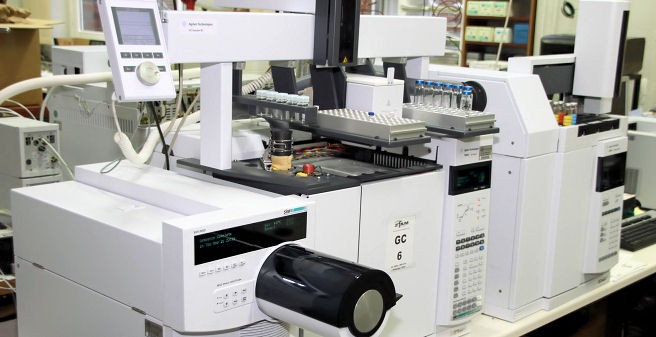Occupational toxicology studies of people exposed to hazardous substances are of central importance at ZfAM. The primary goal of our analytical laboratories is the further development of human biomonitoring (HBM), i.e. the quantitative measurement of hazardous substances or their metabolites in biological materials such as urine and blood. The reference to health-related limit values and statistical reference values enables objective exposure and risk assessment in the field of occupational and environmental medicine. The spectrum of analyses is constantly being expanded and adapted to newly arising questions. Current methodological focal points and developments are in the area of fire smoke components, inhalation anaesthetics, heavy metals, tobacco smoke, isocyanates, industrial solvents and insecticides. In the laboratory, mainly instrumental-analytical measuring techniques are used, which meet the high demands on an HBM in terms of sensitivity, specificity, precision and robustness. In addition to internal quality assurance measures, our laboratory is a reference laboratory for the interlaboratory comparisons (G-EQUAS) of the German Society for Occupational and Environmental Medicine (DGAUM) within the framework of external quality assurance. (DGAUM).
In addition to HBM, ambient monitoring procedures are also established in our laboratories. The focus here is on the analysis of container and indoor air in the global transport of goods (by water or air). The measurement of fumigants and industrial chemicals, which are used as insecticides or can be outgassed from transported goods, serves to protect employees and consumers alike.
In the field of immunology, the focus is on research into the causes and further development of diagnostics of occupational and environmental allergies with regard to respiratory diseases such as bronchial asthma, allergic rhinitis and exogenous allergic alveolitis.
As a contact partner in the context of occupational health screening, we advise accident insurance institutions, companies and company physicians on analytical issues. Together we develop measurement strategies and suitable occupational safety concepts based on the measurements carried out.
